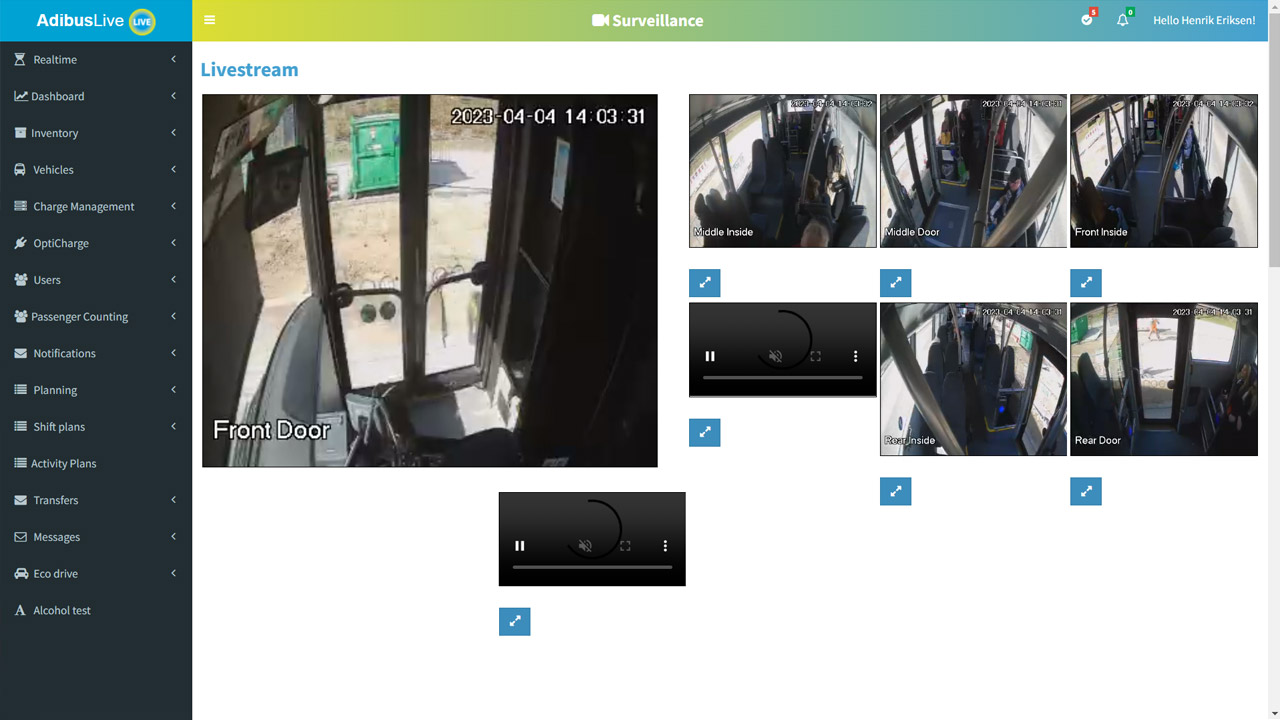Alarm handling
Several parameters are automatically monitored to trigger alarms, while the driver can also manually activate an alarm.
Emergency alarm
The driver can initiate an emergency alarm by pressing a button located near the driver’s seat. This will generate an audible alarm in the adibus Live control center and activate a live video stream from the bus, tram, or train with two-way audio. This allows the operator to see and hear the incident in real time and communicate with the driver via VoIP.
The recorded video footage will include the 5–10 seconds preceding the alarm activation, providing insight into the events leading up to the incident. Other triggers for the alarm may include a sudden deceleration (e.g., from 50 to 0 km/h in one second).
Smart electric bus drive
adibus Live continuously monitors the state of charge (SOC) of electric vehicles. If it becomes evident that a bus will not be able to complete its route (block), an alarm is triggered for both the driver and the operator. The operator can then schedule a replacement vehicle and coordinate the swap with the driver.
Customized alarms
Operators can configure specific parameters to trigger alarms in buses, trams, or trains. These alarms can be based on any telemetry data from the vehicle or other predefined events that require monitoring.


Other operational features
adibus Call – Voice call (VoIP) between the operation center and the driver. The call is always initiated by the operator, but the driver can request it.
Manual override – Includes manual control of destination signs for buses, trams, and trains, as well as manual sign-in and sign-off, and the arrangement of replacement vehicles.
Historical data – Data captured from each bus, tram, and train is stored for up to 3 years.






